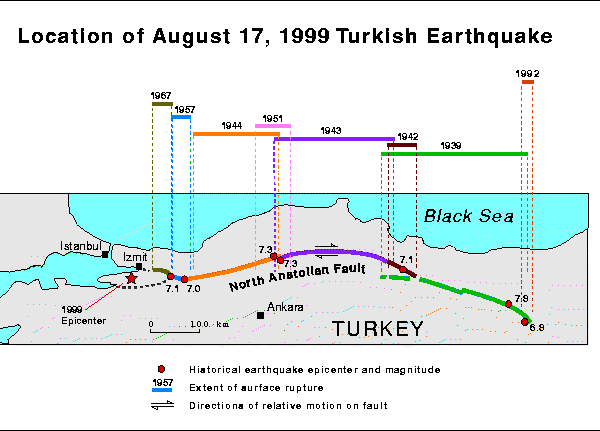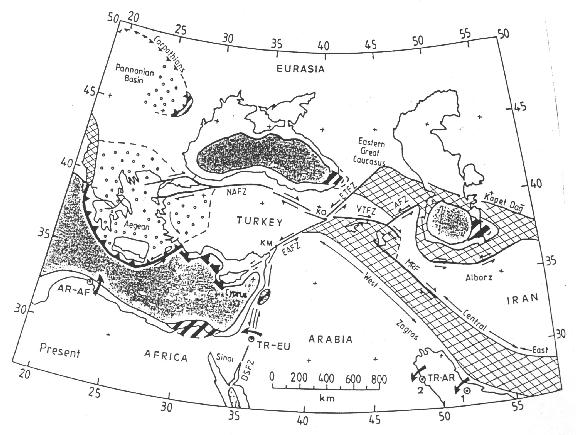The 900 kilometer-long North Anatolian fault has many characteristics similar to California's San Andreas fault. These two faults are right-lateral, strike-slip faults having similar lengths and similar long-term rates of movement. If a person is looking across a right-lateral, strike-slip fault during such an earthquake, that person would see the opposite side move to the right.

|

Figure from Rob Westaway, "Present-day kinematics of the Middle East
and eastern Mediterranean," Journal of Geophysical Research, Volume 99,
pages 12,071 - 12,090, 1994.
На основную страницу Список землетрясений
URL: http://zeus.wdcb.ru/wdcb/sep/strong/19990817/stect.htmlLast revision January 26, 2001